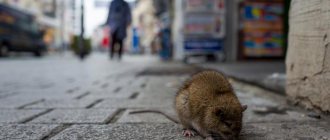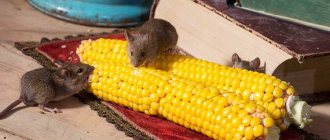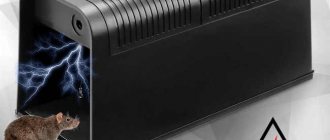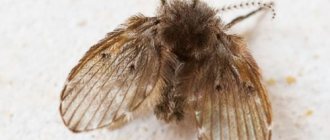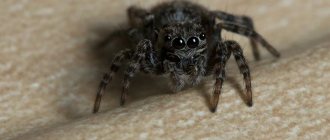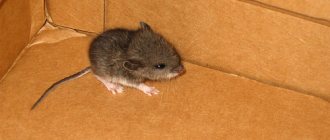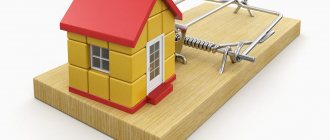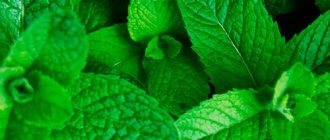Foul symptoms
The mouse smell cannot be confused with anything else
Modern methods of fighting mice and rats cannot always protect owners from such an incident as poisoned dead mice that find themselves in inaccessible places in the house. Therefore, during measures to exterminate rodents, you need to direct your efforts, first of all, to searching for the corpses of rodents.
How to find a dead mouse in the house? Those killed in a garage, barn or other outbuildings can be detected, for example, by their burrows. If it is inconvenient to remove them from there, make a wire hook - it will be easier to get them out. If nothing works out, you need to frequently ventilate the room and treat the mink with an antiseptic.
Places where you need to believe are bags of cereals or flour, behind baseboards, lower shelves in cabinets in the kitchen, most likely where ants and midges have accumulated.
Important! Not only a dead rodent is a source of stench. The urine of mice and their droppings also have a foul smell, which you have to get rid of while simultaneously fighting the rodents themselves.
TOP 3 drugs for removing mouse odor
The most popular products that effectively eliminate mouse odors include the drugs “Lizafin”, “Chlorapin”, “Medifox Dez”. They are safe for human health, recommended for use in children's institutions, and have a wide range of applications.
Lizafin
The drug "Lizafin"
The product is produced in the form of a liquid concentrate, packaged in 5 and 1 liter containers, the approximate price for 1 liter is from 820 to 850 rubles*. Manufacturer: Russian. Special properties of the drug:
- If ingested, it has a hazard class of 3 (medium), and hazard class 4 (low hazard) on the skin.
- Capable of destroying polio viruses, pathogens of plague, cholera, fights bacteria, fungal spores.
The drug is used in diluted form. The manufacturer's instructions indicate the required concentrations and duration of treatment periods. The average concentration level is 1%, the average treatment time is 1.5 hours (from 15 minutes to 2 hours).
On a note! The product is diluted in water, there is no need to add soap substances, it is suitable for disinfecting all types of premises, walls, floors, furniture, tools, and destroys foreign odors.
Chlorapine
The product is produced in powder or tablet form. . The average price for 1 kg is 700 rubles*. Concentration of solution for use: 1 tablet/10 l of water, surface treatment time - 60 minutes. When the concentration is doubled, the treatment time is reduced to 30 minutes. The manufacturer's instructions provide recommendations for the use of the drug. Apply the treatment agent:
- toys;
- bed linen and clothing;
- all types of furniture;
- tableware;
- household items.
The working solution must be used within 6 days after preparation. The shelf life of the original product is 5 years. After treatment with the drug, ventilation of the premises is required.
Medifox Des
The drug is manufactured in Russia, produced in the form of a concentrated liquid, packaged in 1 liter plastic containers. Average price for 1 piece. — 535 rub*. The product is recommended for use in:
- residential premises;
- baths, swimming pools;
- public buildings;
- transport.
On a note! Used to destroy pathogens of hepatitis, HIV infection, influenza, ARVI, herpes, etc., and also as a detergent. The drug is effective in combating odors. "Medifox Des" can be used after thawing; during freezing, the drug does not lose its qualities.
Removing traces of urine and cadaveric rot from surfaces
Having identified the source of unpleasant odors, you can begin to neutralize it. The smell of urine and droppings carries the same danger to the inhabitants of the house as a decaying rodent. Therefore, the treatment is carried out in a similar way, using less aggressive drugs.
When removing mouse odor, you can’t do without general cleaning.
Concentrated urine from mice not only has a foul odor, but can also carry hantaviruses. They are distributed by rodents. To date, no vaccine has been found against it, and in a third of cases of hantavirus pulmonary syndrome, patients do not survive. Therefore, the seriousness of its prevention is not worth talking about.
How to treat the surface depends on the materials from which they are made. Any characteristic stains found on a wooden surface should not be heavily moistened, since urine will be absorbed into the wood along with the preparation. It is better to use a powdered absorbent, and then a spray that neutralizes odors.
It is more difficult to remove stains from drywall, therefore, having determined the extent of the contamination, you need to either cut out a part or replace the entire sheet. How to eliminate the smell if chipboard is damaged? You can try to save the damaged part of the furniture. To do this, thoroughly wipe the contaminated areas with alcohol and treat with a chemical neutralizer.
Features of using products on various surfaces
We will not treat all materials that exude a mouse-like “amber” in the same way. Some require a special approach.
Chipboard
For this material we will follow the algorithm:
- Stain analysis. Rodent urine, due to its ammonia content, can stain the surface of the chipboard. The latter may become discolored or even change its density. It follows from this that it has become thinner, which is why it needs to be diluted with a solution of a weaker consistency. It is also necessary to reduce the exposure time to the chemical.
- The surface for treatment must be prepared: remove all dust and dirt with your own hands or with a special device, and finally degrease.
- The next step is to process the chipboard. It is better to do this from both sides - excrement could be absorbed into the body of the material. If you use a chemical aerosol, then after treatment you need to wait until it is completely absorbed, and then remove the sediment with a rag.
- Once the chipboard is completely dry, it is recommended to treat it with sealants or polish.
Drywall
Unfortunately, if excrement or putrefactive liquid has seeped through the drywall, then this part will be the easiest to remove. By no means can you completely remove the smell from it.
To investigate this fact, you need to remove the drywall and check for stains on the back side. If they are not there, you can treat the surface using one of the methods we propose.
Will ultrasound help?
Natural wood
In the case of wood, you need to remember one thing - in no case overdo it with the amount of solution. If there is too much of it, then the material will swell from excess moisture and particles emitting an unpleasant odor will sink even deeper into its pores, from where it will be even more problematic to remove them.
The best option for wood is to first treat the surface with an absorbent, and then with vinegar, peroxide, etc. or a chemical aerosol. Finally, restore the surface using polish or sealant.
Modern methods of getting rid of mouse odors
When a mouse dies, how do you get rid of the smell? Derat control specialists recommend fighting with proven and effective methods using special preparations.
Absorbents
They will only be effective if the location of the deceased rodent is found. The drug against the cadaverous odor of mice can be purchased at the store. But a homemade absorbent is enough - just cover the area with lime, salt or soda. They neutralize odors, kill bacteria and organic waste generated during decomposition. Stores offer domestic and foreign drugs in various forms - aerosols, powders, tablets. But almost all of them only mask the smell and do not destroy the root cause. Consumers who have gone through the “test” recommend Earth Care Odor Removing.
Air ionizer
Air purifier SUPER-PLUS TURBO will help you get rid of the stench faster
An air purifier with an ionic function will help remove foul odors. During its operation, germs and harmful microorganisms die in the room. Alternatively, it could be a “SUPER-PLUS TURBO” device. It enjoys good consumer reviews and belongs to the mid-priced product of this specific category.
Chemicals
They are the most effective at eliminating the smell of decaying mice. But it is important to remember their toxicity and carry out all work with glasses, gloves and a respirator. The product must contain formaldehyde, which stops the oxidation process.
Advice! Ask specialized pest control specialists how to remove the smell of a dead mouse in your home. Depending on the size of the room and the nature of the odors, specialists use “cold fog”, special sorbents, and a steam jet apparatus.
Causes of odor and its dangers
An unpleasant aroma, indicating the presence of rodents in the home, comes from the male’s marks, with which he attracts his “girlfriends”. The same stench usually comes from cages with indoor rats or hamsters. Then, to get rid of the mouse smell in the house, you just need to put fresh litter or sawdust.
An equally disgusting stench comes from mouse excrement. It is a mixture of methane, sulfur dioxide, and hydrocarbons. The desire to eliminate it cannot be ignored. The peculiarity of this stench is that it quickly penetrates into the smallest pores of the surface and does not disappear. It is especially difficult to eliminate when mice have pooped on the wooden floor. Therefore, to eliminate the unpleasant odor, you have to treat the entire house completely.
The unpleasant aroma of mice itself is not dangerous to humans. It only brings serious health consequences to people suffering from allergic reactions. Substances that can provoke an attack of illness are carried in the air. Nevertheless, you need to get rid of the smell of mice in the house immediately. Otherwise, the stench will penetrate into textiles or porous surfaces, and it will be very difficult to eliminate it.
Folk recipes
- In addition to the cadaverous smell, you have to deal with the odor that remains after the mice “leave.” The most common and effective method is to treat furniture, baseboards and other places where mice hide with vinegar essence. Acetic acid destroys traces of rodents, and its smell gradually disappears.
- Another similar remedy that destroys traces of mice is potassium permanganate. Possessing disinfectant properties, a solution of potassium permanganate will destroy bacteria and unpleasant odors.
- Chlorine-containing products, which eliminate odors, disinfect rooms in the house. An example of such a product is “Whiteness,” which was familiar to our great-grandmothers for its disinfecting properties. This preparation is diluted with water and thoroughly washed all surfaces where traces of mice and the places where they were hiding were found.
- Regular hydrogen peroxide, which can be purchased at a pharmacy, is used as an additional means of treating surfaces after they have been washed with chlorine-containing products. It enhances the effect of disinfectants.
- Ventilation is one of the additional measures to remove “mouse” odors, for example, in a car. Since rodents cannot tolerate drafts, open windows for several hours will make them “nervous.” Mice's havens are mainly located under the floor, so uncomfortable conditions will force them to leave the room.
Important! Since chlorine is a toxic substance and can cause burns to the mucous membranes, and inhalation of its vapors causes poisoning, therefore it is necessary to observe safety precautions. Wear thick rubber gloves, special goggles and a respirator or mask.
Ways to eliminate mouse odor
If rodents have lived in an apartment for a long time, any closet, drawer under the sofa, or other closed spaces and nooks can become a source of unpleasant odor.
Ventilation
To partially get rid of the mouse smell in the house, carry out ventilation. When carrying it out, you need to create a draft by opening all doors and windows. Empty cabinets and drawers of their contents and leave them open.
Intensive ventilation continues for several hours.
Wash
Supplements ventilation. If mice have managed to get into clothing and linen closets, all fabrics are saturated with their smell. Linen needs to be washed, and large items can be taken to the dry cleaner. Clean carpets and textile upholstery with special products (preparations with disinfectant additives: Vanish, Sarma, etc.).
Chlorine treatment
Chlorine bleaches and disinfectants will help remove traces of mouse marks on walls and the bottom of cabinets, in the corners of rooms, in the car and on other surfaces suitable for wet cleaning.
Preparations with chlorine (White, bleach, chloramine, etc.) are used in accordance with the instructions. Dip a sponge or rag into the prepared solution, apply the liquid to the surface and leave for a few minutes. Then rinse everything with clean water and wipe dry.
Dishes, plastic children's toys, glass jars and other items need to be treated if traces of marks are found on them. These are stripes and spots of a sticky substance, with adhered dirt and dust. They emit a characteristic smell. After washing, the items are placed in a disinfectant solution for 20-30 minutes (according to the instructions for the drug). After this, rinse with clean water, dry or wipe.
Hydrogen peroxide treatment
Hydrogen peroxide is a reliable disinfectant that has no odor of its own. It is not suitable for soaking dishes or toys, but the walls of furniture can be treated with it to get rid of the smell of mice after cleaning.
It is convenient to carry out the treatment using a sprayer.
For rinsing, you can use a solution with peroxide:
- 800 ml hydrogen peroxide (3%);
- 100 ml detergent;
- 120 g soda.
The mixture is added to the water for cleaning.
Potassium permanganate solution
Potassium permanganate in the form of a pink solution is also used for disinfection. To prepare the working solution, use a concentrate of dissolved crystals (dark purple). It is convenient to store it in half-liter mineral water containers, adding it to the water as needed (until it turns pink).
You can soak dishes and toys in the solution, and use it to wash floors and furniture. The disadvantage of the drug is its coloring properties: sensitive fabrics, paint on furniture, etc. may darken, become yellowish or turn pink.
Vinegar treatment
Vinegar does not so much disinfect as it eliminates unpleasant odors. You can use different types of sour seasoning: wine, apple or flavored, plain table. For 5 parts of water take 1 part of 6-9% substance.
When using essence, it is first diluted with water in a ratio of 1:10.
Application of absorbents and ionizers
Household absorbents include salt, soda, activated carbon or quicklime. Available preparations absorb any odors well. They can be placed in a smelly kitchen cabinet and replaced as needed until the mouse smell goes away.
Absorbents are especially good when you need to get rid of the smell of a dead rat. Often, when fighting parasites, the corpse is left in an inconspicuous place (for example, under the floor), and then begins to rot. After its detection and elimination, the smell persists for a long time, since odorous substances permeate any surface.
You can remove the smell of a dead mouse by pouring a thin layer of salt, soda or crushed lime on the place where it lay. After 2-3 days, the powder is swept away and thrown away. If the problem has not yet been eliminated, then a layer of absorbent is again poured onto the area where the dead mouse lay. All substances not only eliminate odors, but also actively inhibit the growth of bacteria. In outbuildings, instead of simple lime, you can use bleach.
Ionizing radiation destroys bacteria, but cannot cope with the smell of carrion or rodents. Treatment with quartz lamps can be carried out in living quarters, children's rooms, kitchens or bathrooms where mice have presumably been.
Chemicals
Special products that contain disinfectants and fragrances can be purchased at hardware stores. Among the most common:
- Medifox-Des. Liquid for fighting fungi and mold, disinfecting premises and eliminating unpleasant odors of any origin.
- Lizafin. It is produced in the form of a concentrate; the solution must be prepared according to the instructions. The surfaces to be treated are sprayed with a spray bottle. Destroys bacteria and helps eliminate unpleasant odors.
- Formalin. Dilute according to the instructions for the drug and treat surfaces where a corpse was found or rodents walked. The product has a strong odor of its own, but dissipates quickly.
- Tar. Used in the form of an aqueous solution. You can buy it at a pharmacy or hardware store. The product is non-toxic, but has a characteristic smoky aroma that lasts a long time, especially on wooden surfaces. It destroys any microflora well, muffles mouse odors, and repels the rodents themselves.
Preventive measures
After having to make multiple efforts to get rid of mice and then eliminate the foul odor of their presence, make it a habit to take several measures to prevent their reappearance.
All holes and cracks in the house need to be sealed - this is where the corpses of mice most often rot
- Mandatory weekly wet cleaning of the house. Treat areas where mice may appear with antiseptics that repel them. This could be peppermint oil, which mice will take the “tenth” route. Make rolls of cotton wool or a regular cotton pad will do, which needs to be moistened with oil and placed in places where mice may (have previously) appeared (in the closet, near bulk products, near the trash can, etc.).
- Ventilate all rooms in the house daily - mice do not like drafts.
- Try to seal holes or cracks through which rodents enter your home.
- All food products must be carefully packaged, cereals - in special containers.
- Place trash cans away from your home.
If you detect an unpleasant odor from a decomposing rodent corpse or concentrated excrement, do not delay disinfecting the premises. Timely measures will allow you to get rid of both odors and “uninvited” guests.
Source
How to determine the source of the odor
Every housewife and home owner should know why the ammonia smell coming from mice or rats can be dangerous, and also how to look for the source of this problem. Let us note several solutions:
- If rodents were recently poisoned with poisons that killed pests, then it could well have happened that a mouse died under the house. Her corpse may emit a foul "aroma".
- Peas of rodent excrement scattered here and there are another source of mouse odor.
- It has been noticed that even ants are able to eliminate the smell of mice in the house, crawling along walls, floors and things, they leave traces of their formic acid, which on its way not only “burns” harmful microorganisms, but also evaporates and affects nearby areas of the contaminated surface, as well. disinfecting it.
In the case of dead mice, it is extremely important to find their corpses in order to eliminate them by cremation or burying them deeper in the ground. The area where the dead rodents were found should then be thoroughly disinfected. Because the release of cadaveric poison will have a detrimental effect on the health of people and animals living in the house. If you introduce ants into the house, the problem with the smell will, of course, be solved, but you will have to remove the subsequently multiplied ants, so this is also not an option.
Folk remedies
If it is necessary to get rid of the amber left by rodents that have been in the house or a dead mouse, time-tested folk remedies are also used. Studying possible odor elimination options will allow you to choose the one that is most suitable for a particular case.
A common way to neutralize rodent stench is to treat surfaces where mice may have been present with vinegar. The acid contained in vinegar will eliminate traces of mice, and the vinegar smell itself will disappear after a few days.
- Potassium permanganate used to treat surfaces is a disinfectant that not only removes traces of rats and mice, but also the harmful bacteria and unpleasant odors left by them.
Vinegar is great for removing strong stench.
- Hydrogen peroxide is an inexpensive, readily available, and effective means of controlling rotting rodent odors and other foreign odors. It is recommended to use this product after thorough wet cleaning of the room using chlorine-containing detergents and disinfectants.
- Independent use of solutions containing chlorine allows you not only to eliminate the unpleasant spirit in the room, but also to disinfect it.
- Ventilation of places where rodents may be present is not so effective, but it is a necessary condition when combating odors that arise after mice are in the room.
When treating surfaces with any of the listed means, special attention must be paid to the junction of the skirting boards with walls, corners and other hard-to-reach places.
To prevent the appearance of mice in your home, it is necessary to carry out certain preventive measures at the frequency indicated in the table:
| № | Preventive measures | Frequency of execution |
| 1 | Wet cleaning | Daily |
| 2 | Ventilation of premises | Daily |
| 3 | Treatment with mice repellents | Monthly |
| 4 | Sealing holes and cracks | Annually |
Measures to eliminate mouse odor must necessarily include the removal or thorough treatment of those things or objects with which rodents have had prolonged contact. To learn how to get rid of unpleasant odors at home, watch this video:
If an unpleasant stench comes from the carcass of a dead rat or mouse, then first of all it is necessary to remove it, and only then deal with the smell remaining from it.
The best posts
- Round yoke with knitting needles on top: pattern of a turquoise sweater for a girl
- Design features of the goose step staircase and step-by-step construction
- Wallpaper textures: seamless, textured for walls, voluminous and embossed, classic, photo, gray, 3d, wood, paintable, white, video
- Where are radius doors used: types and materials
- Wallpaper with ornaments: ideas for the interior
- Floor insulation with expanded clay in a wooden house between joists
- Design of a one-room apartment 30 sq m

